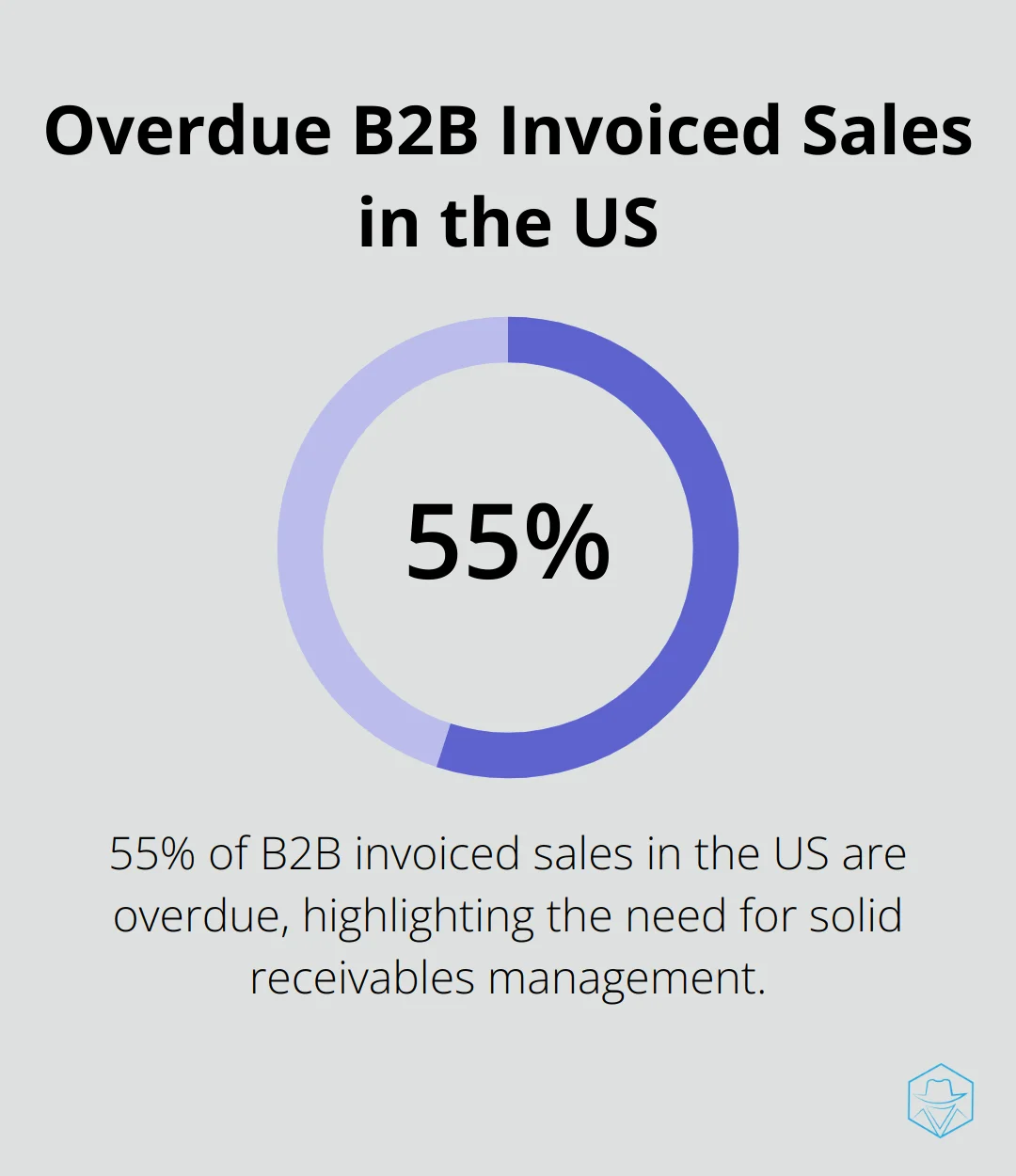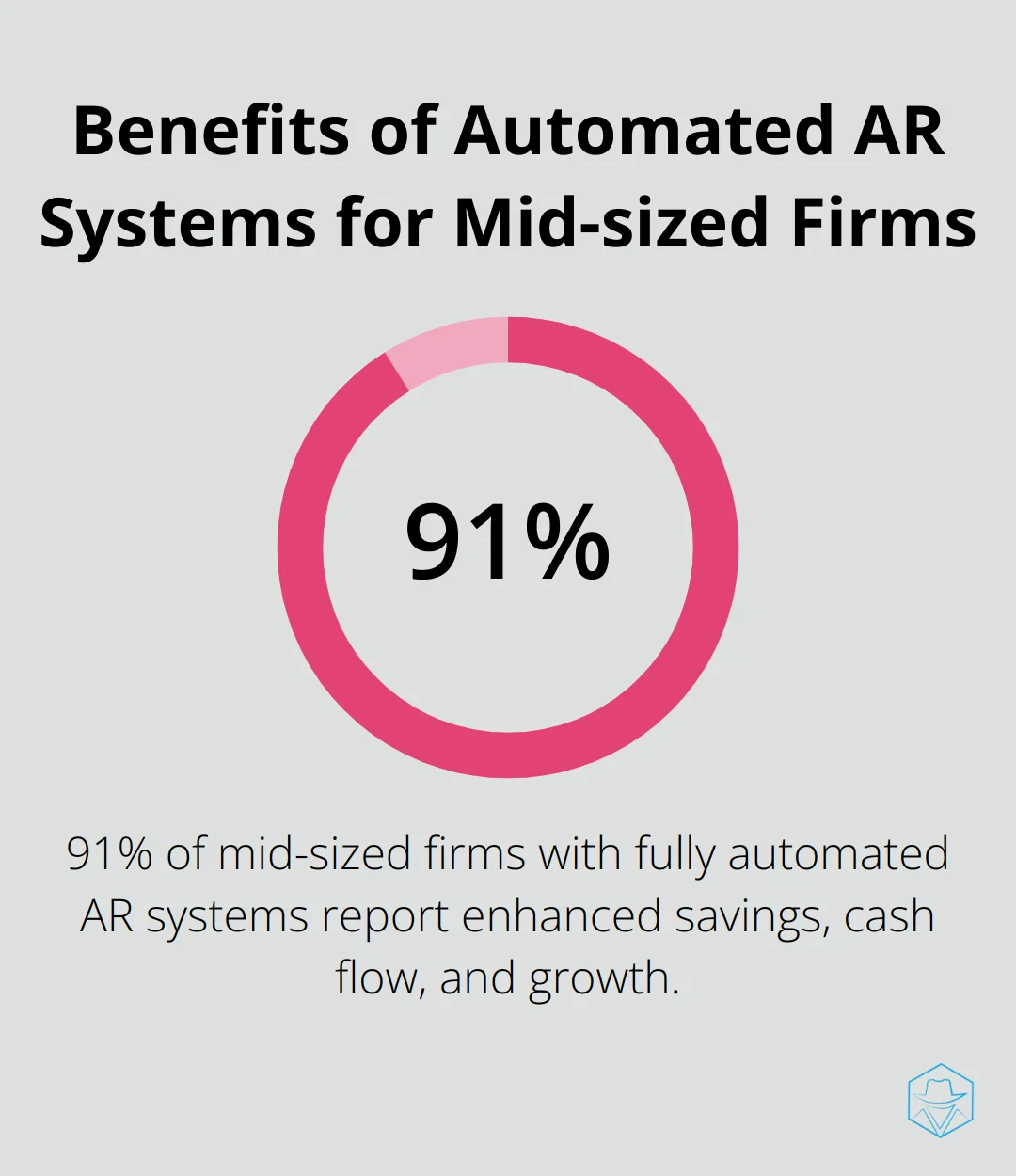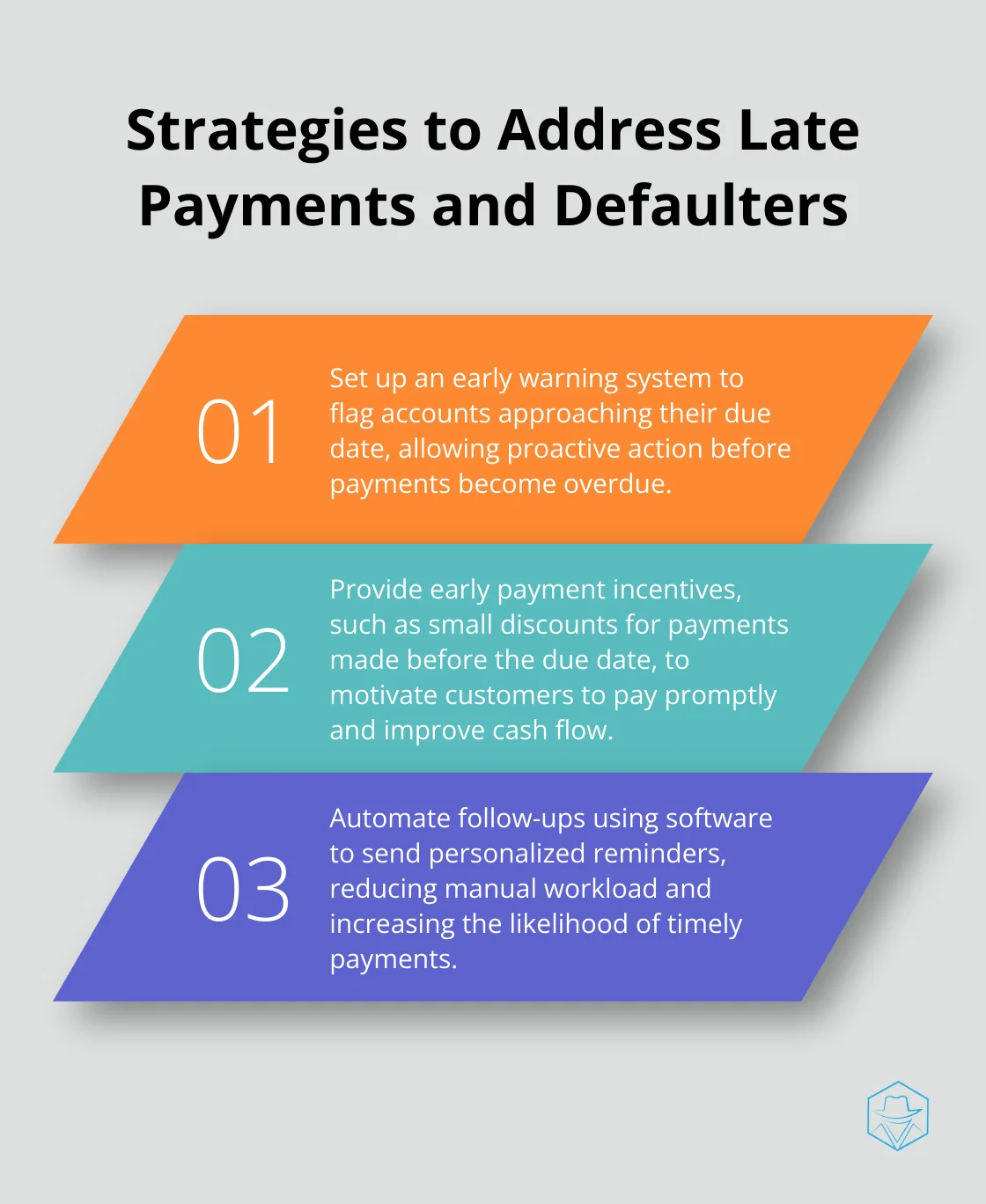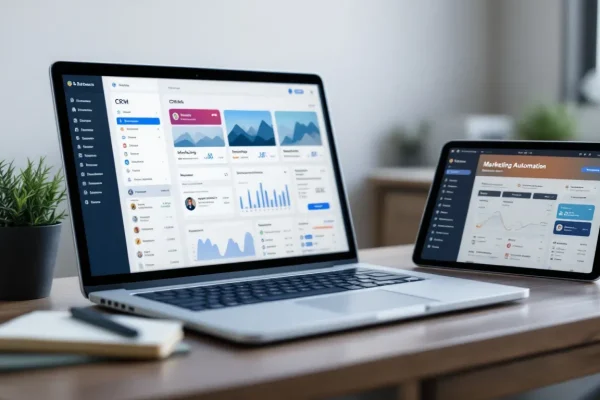Optimizing Receivables Management for Business Success

At Drop Cowboy, we know that effective receivables management is the lifeblood of any successful business. It’s not just about collecting payments; it’s about maintaining a healthy cash flow and fostering strong customer relationships.
In this post, we’ll explore strategies to optimize your receivables management process, helping you overcome common challenges and boost your financial stability.
What Is Receivables Management?
The Core of Financial Health
Receivables management forms the backbone of a company’s financial health. This process involves tracking and collecting payments owed to a business for goods or services provided. Effective receivables management maintains healthy cash flow and ensures business sustainability.
Key Components of Receivables Management
An effective receivables management system consists of several critical elements:
- Clear Invoicing Process: This involves sending out accurate, timely invoices with all necessary details.
- Robust Tracking System: A system to monitor outstanding payments is essential.
- Defined Follow-up Process: A structured approach for addressing late payments is necessary.
A study by PYMNTS reveals that 55% of all B2B invoiced sales in the US are overdue, highlighting the need for a solid receivables management strategy.

Impact on Cash Flow
Proper receivables management directly affects a business’s cash flow. Timely customer payments provide funds for operational expenses, growth investments, and financial buffers for unexpected costs.
Intuit Quickbooks reports that UK small and medium-sized businesses are owed an average of £27,214 in overdue payments. This tied-up cash significantly limits a company’s operational and growth capabilities.
Leveraging Technology
Technology streamlines the receivables management process. Automation tools handle routine tasks like sending invoices and payment reminders, allowing teams to focus on complex issues.
For instance, Drop Cowboy’s Smart Delivery™ feature ensures efficient global message delivery, which businesses can use to automate their payment reminder processes.
Balancing Relationships and Finances
An optimized receivables management system goes beyond collecting payments. It fosters positive customer relationships while maintaining financial health. This delicate balance requires a strategic approach to communication and follow-up procedures.
As we move forward, we’ll explore specific strategies to streamline your receivables process and overcome common challenges in this critical aspect of business management.
How to Streamline Your Receivables Process
Establish Clear Credit Policies
The foundation of an efficient receivables process lies in clear, written credit policies. These policies should outline payment terms, credit limits, and consequences for late payments. Your sales team and customers must understand these policies from the start. A study by Atradius reveals that businesses with well-defined credit policies experience a 30% reduction in late payments.
Implement credit checks for new customers. While this might seem like extra work, it can prevent potential issues in the future. Use credit scoring tools to assess risk and set appropriate credit limits (this practice can save you from costly payment defaults).
Leverage Automation in Invoicing
Manual invoicing consumes time and increases the risk of errors. Automating this process improves efficiency and accuracy. A report by PYMNTS indicates that 91% of mid-sized firms with fully automated AR systems report enhanced savings, cash flow, and growth.

Use invoicing software that integrates with your accounting system. This allows for real-time updates and reduces the risk of double entries or lost invoices. Many of these systems can send automatic reminders for upcoming and overdue payments, freeing up your team’s valuable time.
Offer Diverse Payment Options
Make it easy for customers to pay, and you’ll receive your money faster. Provide a variety of payment methods including credit cards, ACH transfers, and online payment portals. A study by Intuit Quickbooks found that businesses offering multiple payment options get paid up to 20% faster than those with limited options.
Implement a customer portal where clients can view their invoices and make payments directly. This speeds up the payment process and reduces the workload on your accounts receivable team.
Utilize Effective Communication Tools
Clear and timely communication plays a vital role in receivables management. Use tools that allow you to send personalized reminders and follow-ups efficiently. For instance, Drop Cowboy’s Smart Delivery™ feature ensures efficient global message delivery, which businesses can use to automate their payment reminder processes.
Monitor and Analyze Performance
Regularly track key metrics such as Days Sales Outstanding (DSO) and Collection Effectiveness Index (CEI). These indicators provide insights into the effectiveness of your receivables process. Use this data to identify areas for improvement and adjust your strategies accordingly.
The journey to optimize your receivables process doesn’t end here. Even with these strategies in place, businesses often face challenges in managing their receivables. In the next section, we’ll explore how to overcome common obstacles in receivables management.
Tackling Receivables Hurdles
Late Payments and Defaulters
Late payments plague many businesses. A study by Atradius shows that 55% of all B2B invoiced sales in the US are overdue. To address this issue:

- Set up an early warning system: Use software to flag accounts approaching their due date. This allows you to take action before payments become overdue.
- Provide early payment incentives: Offer a small discount for payments made before the due date. This can motivate customers to pay promptly and improve your cash flow.
- Automate follow-ups: Use automated reminders to reduce manual workload. Personalized SMS reminders can increase the likelihood of timely payments.
- Create a clear escalation process: For persistent late payers, move from friendly reminders to more formal communications. In severe cases, involve a collections agency.
Seasonal Cash Flow Fluctuations
Many businesses face seasonal ups and downs in their cash flow. Here’s how to manage these fluctuations:
- Create a cash reserve: During high-revenue periods, set aside funds to cover expenses during slower months. Try to build a reserve that can cover at least three months of operating costs.
- Modify payment terms: Offer extended payment terms during peak seasons and shorter terms during off-seasons. This can help balance your cash flow throughout the year.
- Expand your customer base: Seek clients from different industries or regions with varying seasonal patterns. This can stabilize your revenue stream throughout the year.
- Apply data analytics: Analyze historical data to predict seasonal trends accurately. This allows you to prepare for cash flow dips and plan your expenses accordingly.
Balancing Relationships and Financial Needs
Maintaining positive customer relationships while ensuring timely payments can be challenging. Here’s how to strike the right balance:
- Communicate clearly and frequently: Be transparent about your payment terms from the start. Regular, friendly communication can prevent misunderstandings and foster goodwill.
- Customize your approach: Tailor your communication style to each customer. Some may prefer formal emails, while others respond better to casual check-ins.
- Offer flexible solutions: For valuable customers facing temporary financial difficulties, consider offering payment plans. This shows understanding and can strengthen long-term relationships.
- Train your team: Ensure your sales and account management teams understand the importance of timely payments. They should be able to discuss payment terms confidently with customers.
- Acknowledge good payers: Implement a system to recognize customers who consistently pay on time. This could involve preferential treatment, extended credit limits, or small gestures of appreciation.
Leveraging Technology
Modern technology can significantly improve receivables management. Consider these tech-driven solutions:
- Implement automated invoicing: This reduces errors and speeds up the billing process (studies show it can cut processing time by up to 80%).
- Use AI-powered analytics: These tools can predict payment patterns and identify high-risk accounts, allowing for proactive management.
- Adopt cloud-based platforms: These allow real-time access to receivables data, improving decision-making and collaboration across teams.
- Integrate payment gateways: This makes it easier for customers to pay, potentially reducing payment delays.
Final Thoughts
Effective receivables management forms the cornerstone of business success. Companies can improve their cash flow and financial stability through clear credit policies, automation, and diverse payment options. Addressing challenges like late payments, seasonal fluctuations, and customer relationships requires a strategic approach that combines technology, communication, and flexibility.
An efficient receivables system provides benefits beyond immediate cash flow improvements. It enhances customer relationships, reduces financial stress, and offers valuable insights for strategic decision-making. Streamlined processes allow businesses to allocate resources more effectively, invest in growth opportunities, and build resilience against economic uncertainties.
Drop Cowboy offers innovative solutions for businesses that want to enhance their receivables management. Our platform’s Smart Delivery™ feature ensures efficient global message delivery, which can automate payment reminders and improve collection rates (this can lead to higher efficiency and better results). The integration of such tools into your receivables strategy will support your business’s financial health, foster strong customer relationships, and drive sustainable growth.
blog-dropcowboy-com
Related posts

April 21, 2025
CRM vs Marketing Automation: Which Do You Need?
Compare CRM vs Marketing Automation to boost efficiency. Discover which tool best fits your business needs for growth and better customer management.

April 17, 2025
Essential Shopify Apps for Successful Dropshipping
Discover the best Shopify apps for dropshipping to boost efficiency, streamline operations, and enhance customer experience effortlessly.

April 21, 2025
Is Klaviyo Worth the Cost? Pricing Explained
Explore Klaviyo pricing and value. Learn if its features justify the cost for your marketing strategy. Make informed decisions with our analysis.

April 17, 2025
Marketing Automation Strategy: Key Elements to Consider
Boost your marketing-automation-strategy by exploring key elements that enhance efficiency, drive engagement, and increase ROI.

April 14, 2025
Crafting the Perfect Shopify Abandoned Cart Email
Boost sales by crafting the perfect Shopify abandoned cart email. Learn effective strategies to recover lost revenue today.

June 23, 2025
How Much Does SimpleTexting Cost?
Explore SimpleTexting pricing and uncover costs, features, and benefits to make informed decisions on your texting services in this comprehensive guide.